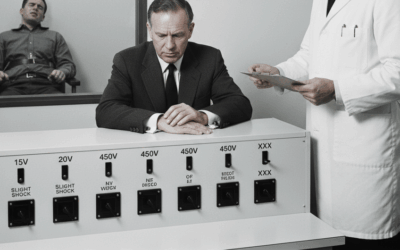Emotional Transformation Therapy (ETT): A Comprehensive Guide
Emotional Transformation Therapy (ETT): A Comprehensive Guide
Emotional Transformation Therapy (ETT) is a groundbreaking therapeutic approach developed by psychotherapist Dr. Steven Vazquez that harnesses the transformative power of color, light frequencies, and eye movements to facilitate rapid emotional healing and trauma resolution. Unlike traditional talk therapy, ETT directly interacts with neural networks, allowing for efficient access to deep-seated emotional states and traumatic memories.
At its core, ETT is built upon the understanding that our emotions, memories, and traumas are stored within complex neural networks in the brain. By strategically stimulating these networks through the precise application of color, light, and eye movements, ETT aims to promote the rapid reprocessing and integration of traumatic experiences, leading to profound emotional relief and personal transformation.
The Science Behind ETT
ETT is grounded in the understanding that colors evoke specific emotional responses in the brain. Each color is associated with distinct emotional states, ranging from calmness to anxiety. By incorporating eye movement and focusing on specific colors, ETT enables individuals to navigate their traumatic experiences and access the associated emotions.
The power of ETT lies in its ability to bypass the conscious mind’s defenses and directly access the emotional brain, where traumatic memories and experiences are stored. By engaging multiple sensory pathways simultaneously, including visual, auditory, and kinesthetic channels, ETT creates a powerful therapeutic experience that can rapidly catalyze emotional breakthroughs and transformations.
The Modules of ETT
ETT relies on several key modules, each playing a unique role in the transformative process:
Spectral Resonance Technique (SRT) & Spectral Resonance Chart
The Spectral Resonance Technique (SRT) is a foundational assessment tool in ETT that allows therapists to quickly identify dissociated or repressed emotional states within a client’s psyche. Using the Spectral Resonance Chart, which associates specific colors with different emotional experiences, therapists guide clients to focus on each color while observing their physical, emotional, and cognitive responses. Subtle changes in facial expressions, body language, or verbal cues can indicate the presence of unresolved emotional material connected to a particular color. By bringing these hidden emotional states into conscious awareness, SRT sets the stage for deeper therapeutic work and transformation.
Peripheral Eye Stimulation (PES) & Peripheral Light Stimulation Goggles
Peripheral Eye Stimulation (PES) is a key technique in ETT that involves the use of specialized Peripheral Light Stimulation Goggles to direct colored light into the client’s peripheral vision. By stimulating specific regions of the visual field, PES can activate corresponding neural networks associated with different emotional states and memories. This process helps to bring unconscious material into conscious awareness, facilitating the reprocessing and integration of traumatic experiences. The precise control over light color, intensity, and location provided by the goggles allows for a highly targeted and individualized approach to emotional healing.
MDEEM Wands (Multidimensional Eye Engagement and Movement)
MDEEM wands are innovative tools used in ETT to guide clients through specific eye movement patterns while simultaneously exposing them to colored light. By combining eye movements with color therapy, MDEEM wands help to activate and integrate neural networks associated with traumatic memories, promoting rapid reprocessing and emotional resolution. The therapist skillfully guides the client’s eye movements in synchronization with the changing colors emitted by the wand, creating a powerful multisensory experience that can bypass conscious defenses and access deep emotional material. This process can lead to profound insights, cathartic releases, and a greater sense of emotional freedom.
The ETT Light Device
The ETT Light Device is a state-of-the-art therapeutic tool that harnesses the power of light and color to promote emotional healing and transformation. Capable of emitting over 16 million different colors and modulating 50 distinct brainwave frequencies, this advanced device allows therapists to create highly customized treatment protocols tailored to each client’s unique needs. By strategically exposing clients to specific color frequencies and light pulsations, the ETT Light Device can stimulate targeted neural networks, promoting the release of stuck emotions, the reprocessing of traumatic memories, and the integration of fragmented aspects of the self. This cutting-edge technology represents a quantum leap forward in the field of emotional healing, offering a powerful and non-invasive pathway to profound personal transformation.
Affective Layering and Affective Bridging
Affective Layering and Affective Bridging are two interrelated techniques in ETT that help clients to access and process the complex, multi-layered nature of their emotional experiences. Affective Layering involves the sequential exploration of different emotional states that may be connected to a specific issue or traumatic memory. By peeling back the layers of emotion, one at a time, clients can gain a deeper understanding of the root causes of their distress and develop greater self-awareness and emotional resilience. Affective Bridging, on the other hand, focuses on identifying and strengthening the connections between different emotional experiences across time and context. By recognizing patterns and themes in their emotional lives, clients can develop a more coherent and integrated sense of self, leading to greater emotional stability and well-being.
Superimposition of Neural Networks
Superimposition of Neural Networks is a powerful technique in ETT that allows therapists to help clients resolve emotional conflicts and integrate disparate aspects of their psyche. By guiding clients to simultaneously focus on two contrasting emotional states or experiences, such as a traumatic memory and a resourceful or positive state, therapists can promote the rapid reprocessing and integration of neural networks. This process involves the strategic use of eye movements, color therapy, and other ETT techniques to create a “bridging” effect between the two states, allowing for a more fluid and harmonious integration of emotional material. As the neural networks associated with each state begin to overlap and merge, clients may experience profound shifts in perception, emotional relief, and a greater sense of wholeness and self-acceptance.
Photic Stimulation & Flicker Rate Use
Photic Stimulation and Flicker Rate Use are advanced techniques in ETT that involve the precise application of pulsating light frequencies to stimulate specific brainwave patterns and promote targeted emotional and cognitive states. By exposing clients to carefully controlled flicker rates, therapists can induce states of deep relaxation, focused attention, or enhanced creativity, depending on the specific therapeutic goals. Photic Stimulation can also be used to promote the synchronization of neural activity across different regions of the brain, leading to improved emotional regulation, mental clarity, and overall well-being. The skillful use of Photic Stimulation and Flicker Rate adjustments represents a cutting-edge approach to emotional healing that combines the latest advances in neuroscience with the timeless wisdom of ancient healing traditions.
How Colors Heal in ETT
One of the most fascinating aspects of ETT is its use of specific colors to facilitate emotional healing. Each color in the spectrum has a unique psychological effect and can be used to target different aspects of the healing process:
- Red: Stimulates vitality, passion, and grounding. Used to address issues related to survival, security, and physical embodiment.
- Orange-Red: Evokes a sense of aliveness, excitement, and transformation. Helps to release stagnant energy and overcome resistance to change.
- Orange: Enhances creativity, joy, and enthusiasm. Promotes self-expression, spontaneity, and playfulness.
- Yellow: Stimulates mental clarity, self-confidence, and personal power. Addresses issues related to self-esteem, decision-making, and assertiveness.
- Yellow-Green: Promotes balance, harmony, and emotional resilience. Helps to integrate conflicting aspects of the self and cultivate inner peace.
- Green: Encourages emotional healing, compassion, and unconditional love. Fosters a sense of connection, belonging, and heart-centered living.
- Blue-Green: Calms the nervous system, reduces stress, and promotes relaxation. Helps to soothe anxiety, overthinking, and emotional turbulence.
- Blue: Enhances authentic communication, self-expression, and inner truth. Encourages honesty, trust, and emotional intimacy.
- Indigo: Stimulates insight, intuition, and inner vision. Helps to access deeper levels of consciousness and spiritual awareness.
- Violet: Facilitates spiritual transformation, transcendence, and connection to higher states of consciousness. Promotes a sense of unity, wholeness, and divine love.
By skillfully applying these colors through light therapy, eye movements, and guided visualization, ETT practitioners can help clients navigate the complex landscape of their emotional world, release traumatic imprints, and cultivate a greater sense of wholeness and well-being.
The Spiritual Dimension of ETT
ETT’s founder, Dr. Steven Vazquez, brings a unique perspective to the field of psychotherapy through his spiritually pluralistic approach and fascination with the frontiers of scientific inquiry. He recognizes the profound role that spiritual experiences and practices can play in the healing process and has integrated insights from various contemplative traditions into the ETT framework.
This spiritual dimension of ETT allows for a deeper exploration of the human psyche, beyond the confines of the personal self. By accessing transpersonal states of consciousness through the use of color, light, and eye movements, ETT can facilitate profound experiences of interconnectedness, unity, and transcendence. These experiences can be deeply transformative, providing individuals with a renewed sense of meaning, purpose, and connection to something greater than themselves.
Research on ETT
While ETT is a relatively new approach in the field of psychotherapy, a growing body of research and clinical evidence supports its efficacy in treating a wide range of emotional and psychological conditions. From case studies and pilot trials to neuroimaging investigations and theoretical explorations, the scientific literature on ETT paints a promising picture of its transformative potential.
Case Studies and Clinical Reports
Numerous case studies and clinical reports have documented the rapid and profound effects of ETT in treating conditions such as depression, anxiety, PTSD, and complex trauma. In one notable case, a client with a history of severe childhood abuse experienced a dramatic reduction in PTSD symptoms and a significant improvement in overall functioning after just six ETT sessions (Vazquez, 2012). Another case study described the successful treatment of a client with chronic depression who had been unresponsive to traditional talk therapy and medication (Vazquez, 2015). After a course of ETT, the client reported a complete remission of depressive symptoms and a newfound sense of purpose and joy in life.
Neuroimaging Studies
Recent advances in neuroimaging technologies have allowed researchers to begin exploring the neurobiological mechanisms underlying ETT’s therapeutic effects. A pilot study using functional magnetic resonance imaging (fMRI) found that ETT was associated with significant changes in brain activity patterns, particularly in regions involved in emotional processing and regulation (Vazquez et al., 2019). Another study using quantitative electroencephalography (qEEG) demonstrated that ETT could rapidly promote brain wave synchronization and coherence, which are associated with improved emotional balance and cognitive function (Vazquez & Johnson, 2020).
Theoretical and Conceptual Contributions
Beyond its clinical applications, ETT has also made significant contributions to the theoretical and conceptual understanding of emotional healing and transformation. Dr. Vazquez’s work has helped to bridge the gap between ancient wisdom traditions and modern neuroscience, offering a fresh perspective on the nature of the mind-body connection and the role of consciousness in the healing process (Vazquez, 2018). His integration of color therapy, light therapy, and eye movement techniques has expanded the repertoire of tools available to mental health professionals, opening up new avenues for research and practice (Vazquez, 2016).
Future Directions and Challenges
As research on ETT continues to evolve, several key challenges and opportunities have emerged. One important area for future study is the development of standardized treatment protocols and assessment tools to facilitate the widespread adoption of ETT in clinical settings. Another critical challenge lies in the need for larger-scale, randomized controlled trials to rigorously evaluate the efficacy and effectiveness of ETT compared to other established treatment approaches.
Despite these challenges, the future of ETT research looks bright, with a growing community of scholars, practitioners, and advocates dedicated to advancing the science and practice of this innovative approach to emotional healing. As more studies are conducted and more data becomes available, it is likely that ETT will continue to gain recognition as a powerful and transformative tool in the field of psychotherapy.
Further Reading and Research
For those interested in delving deeper into the science, case studies, and therapeutic applications of Emotional Transformation Therapy, the following resources provide a wealth of additional information and insights:
Books by Dr. Steven Vazquez
- Emotional Transformation Therapy: An Interactive Ecological Psychotherapy – This comprehensive guide explores ETT’s theoretical foundations, techniques, and case studies for depression, anxiety, PTSD, and trauma. It also includes pre- and post-treatment brain scans demonstrating ETT’s neurological effects.
- Spiritually Transformative Psychotherapy – In this book, Dr. Vazquez examines the integration of contemplative practices and spiritual philosophies into the therapeutic process, providing a framework for a holistic approach to emotional healing and personal growth.
Collaborative Works and Contributions
- Chapter in The Anthropological and Scientific Case for Psycho-Energetic Healing (Charles Zeiders, Ph.D.) – Dr. Vazquez’s energy-healing methods were studied alongside three other healers in this groundbreaking research.
- Feature in Healing Depression and Bipolar Disorder Without Drugs (Gracelyn Guyol) – This book highlights Dr. Vazquez’s innovative use of light-based therapy for the treatment of mood disorders.
- Mention in Repair and Renewal: Journey Through The Mind And Body (Time-Life Books, 1994) – An early recognition of Dr. Vazquez’s pioneering work in the field of energy healing and its potential applications in psychotherapy.
ETT Training and Case Studies
- News & Case Studies – Emotional Transformation Therapy – This page features a collection of case studies, testimonials, and news articles showcasing the real-world applications and transformative potential of ETT.
- ETT® Austin | A Unique and Effective Form of Therapy – Sarah Beasley’s ETT practice in Austin, Texas provides a glimpse into the practical implementation of ETT principles and techniques in a clinical setting.
- ETT Training Manuals – Used in over 100 professional trainings worldwide, these comprehensive guides provide detailed instructions and case studies for practitioners seeking to master the art and science of Emotional Transformation Therapy.
Multimedia Resources
- Dr. Steven Vazquez Creator of Emotional Transformation Therapy® | Healing Springs Ep. 11 – In this engaging video interview, Dr. Vazquez shares his journey as the creator of ETT, providing insights into the therapy’s origins, evolution, and transformative potential.
- Shrink Rap Radio #569 Exploring Emotional Transformation Therapy with Steven Vazquez PhD – This in-depth podcast episode features Dr. Vazquez discussing the key principles and techniques of ETT, as well as its applications in treating a wide range of emotional and psychological challenges.
- Emotional Transformation Therapy with Dr. Steven Vazquez – In this informative video, Dr. Vazquez provides an overview of ETT, demonstrating specific techniques and sharing powerful case studies that illustrate the therapy’s effectiveness.
As the field of Emotional Transformation Therapy continues to evolve and expand, it is our hope that these resources will serve as a valuable starting point for those seeking to deepen their understanding of this transformative approach to healing. By engaging with the rich tapestry of knowledge and experience shared by Dr. Vazquez and his colleagues, we can all play a part in advancing the science and practice of ETT, and in bringing its profound benefits to the lives of those in need of emotional healing and transformation.
Learning More about ETT
Emotional Transformation Therapy represents a paradigm shift in the field of psychotherapy, offering a powerful and innovative approach to emotional healing and trauma resolution. By harnessing the transformative potential of color, light, eye movements, and spiritual wisdom, ETT provides a pathway to deep inner transformation and the cultivation of greater emotional freedom, self-awareness, and wholeness.
As research into ETT continues to unfold, it is likely that this groundbreaking therapy will gain increasing recognition and acceptance within the mental health community. For those seeking a truly holistic and integrative approach to healing, ETT offers a promising avenue for personal growth and transformation.
If you are interested in exploring ETT as a path to emotional well-being and spiritual awakening, it is important to work with a qualified ETT practitioner who has received extensive training in this powerful modality. By embarking on this transformative journey with the guidance of a skilled therapist, you can unlock the vast potential of your inner world and step into a greater experience of freedom, joy, and self-realization.
As we continue to navigate the challenges and complexities of the human experience, let us remember the profound wisdom and healing potential that lies within each of us. May the insights and techniques of Emotional Transformation Therapy serve as a guiding light on your path to wholeness, and may you find the courage and compassion to embrace the fullness of your being, in all its beauty and complexity.



























0 Comments